Home>Articles>How To Install Crown Molding On Cabinets That Go To The Ceiling
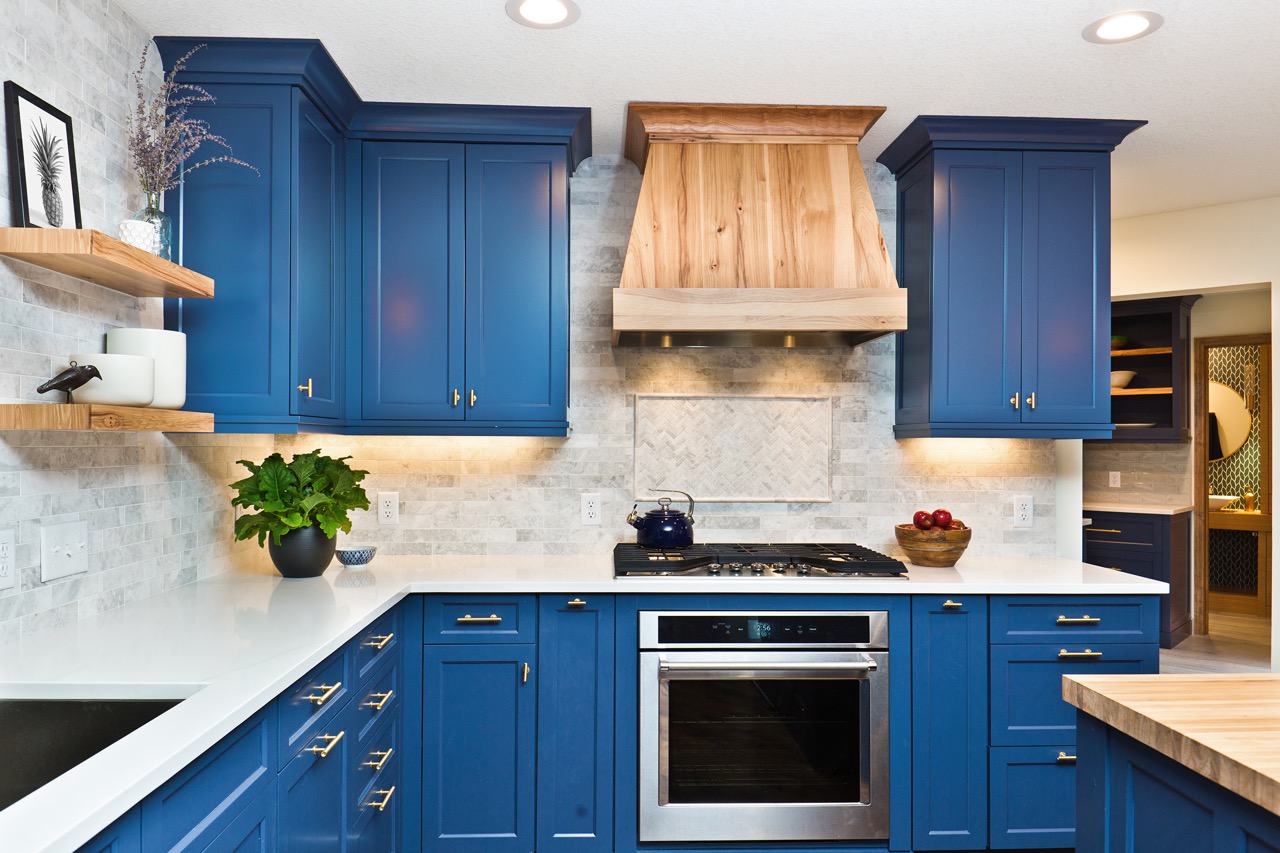

Articles
How To Install Crown Molding On Cabinets That Go To The Ceiling
Modified: May 6, 2024
Discover expert articles on how to install crown molding on cabinets that go to the ceiling. Enhance the beauty of your space with this detailed guide and step-by-step instructions.
(Many of the links in this article redirect to a specific reviewed product. Your purchase of these products through affiliate links helps to generate commission for Storables.com, at no extra cost. Learn more)
Introduction
Installing crown molding on cabinets that go all the way to the ceiling can greatly enhance the overall look and feel of your kitchen or any other room. Crown molding adds a touch of elegance and sophistication, giving the cabinets a finished and polished appearance. While the process of installing crown molding may seem daunting at first, with the right tools and a step-by-step approach, it can be a rewarding and achievable DIY project.
In this article, we will guide you through the process of installing crown molding on cabinets that go to the ceiling. We will cover each step in detail, providing you with the necessary tools and materials required, measuring and cutting techniques, attachment methods, and finishing touches. By following these instructions, you’ll be able to transform your cabinets and create a stunning visual impact.
Before beginning the installation, it’s important to ensure that you have the necessary tools and materials readily available. You will need a miter saw, a coping saw, a tape measure, a level, a caulk gun, a nail gun or finishing nails, a hammer, wood filler, sandpaper, primer, and paint. Additionally, you will need crown molding, which can be found at your local hardware store. Make sure to choose a molding style that complements the overall design of your cabinets and the room.
Next, you’ll need to measure the amount of crown molding needed. Measure the perimeter of the cabinets and add a little extra to account for any mistakes or miscalculations. It’s always better to have a little extra than to run out in the middle of the installation.
Once you have all the necessary tools and materials and have calculated the amount of crown molding needed, it’s time to prepare the cabinets for installation. Remove any existing trim or moldings from the cabinets if necessary. Ensure that the cabinets are clean and free from any dust or debris. It’s also a good idea to apply a primer coat if your cabinets are not pre-finished.
In the next steps, we will guide you through measuring and cutting the crown molding, attaching it to the cabinets, and finishing the installation. We will provide detailed instructions and tips to help you achieve a professional-looking result. So grab your tools and let’s get started on transforming your cabinets with the installation of crown molding!
Key Takeaways:
- Installing crown molding on cabinets that reach the ceiling can elevate the overall look and feel of your space, adding elegance and sophistication. With the right tools and step-by-step approach, it’s a rewarding and achievable DIY project.
- Proper preparation, accurate measurements, precise cuts, and secure attachment are crucial for a seamless installation. Filling, sanding, priming, and painting the crown molding add the final touch of elegance and protection, transforming your cabinets into a focal point of your room.
Read more: How To Install Kitchen Cabinet Crown Molding
Tools and Materials Required
Before you begin installing crown molding on cabinets that reach the ceiling, it’s important to ensure that you have all the necessary tools and materials. Having everything prepared in advance will make the installation process smoother and more efficient. Here’s a list of the tools and materials you’ll need for this project:
Tools:
1. Miter Saw: A miter saw is an essential tool for cutting precise angles in the crown molding. It allows you to create clean and accurate cuts for a professional finish.
2. Coping Saw: A coping saw is used to create cope joints, which are necessary for joining two pieces of crown molding that meet at an inside corner. It helps achieve a seamless and tight fit.
3. Tape Measure: Accurate measurements are crucial in ensuring that the crown molding fits properly on your cabinets. A tape measure will help you measure the length, width, and height of your cabinets.
4. Level: A level is used to ensure that the crown molding is installed straight and level. It helps prevent any uneven gaps or crooked lines.
5. Caulk Gun: A caulk gun is used to apply caulk along the seams between the crown molding and the cabinets. Caulk helps create a seamless and finished look by filling in any gaps or cracks.
6. Nail Gun or Finishing Nails: To secure the crown molding to the cabinets, you’ll need a nail gun or finishing nails. A nail gun provides a faster and more efficient way to attach the molding, but if you don’t have one, you can use a hammer and finishing nails instead.
7. Hammer: If you’re not using a nail gun, a hammer will be needed to drive the finishing nails into the cabinets. Make sure to use a hammer with a small and narrow head to avoid damaging the crown molding.
8. Wood Filler: Wood filler is used to fill any nail holes or gaps in the crown molding. It helps create a smooth and seamless surface before painting or staining.
9. Sandpaper: Sandpaper is used to sand down the wood filler and smoothen any rough edges or surfaces on the crown molding. It prepares the molding for priming and painting.
10. Primer: Applying a primer coat to the crown molding before painting helps the paint adhere better and provides a more even finish. It also helps to seal the wood and prevent any moisture damage.
11. Paint: Choose a paint color that complements the overall aesthetic of your cabinets and the room. A high-quality paint will ensure a durable and long-lasting finish.
Materials:
1. Crown Molding: Select crown molding that matches the style and dimensions you desire. Choose a material that suits your preference, such as wood or composite.
2. Finishing Nails: If you’re using a hammer instead of a nail gun, make sure to have finishing nails of the appropriate length for securing the crown molding.
By gathering all the necessary tools and materials before starting the project, you’ll be well-prepared to install crown molding on your cabinets and achieve a professional and polished look.
Step 1: Measure and Calculate the Amount of Crown Molding Needed
The first step in installing crown molding on cabinets that reach the ceiling is to accurately measure and calculate the amount of crown molding needed. This step is crucial in ensuring that you purchase the correct amount of molding and avoid any delays or shortages during the installation process. Here’s how you can measure and calculate the required amount of crown molding:
1. Measure the Perimeter: Begin by measuring the perimeter of the cabinets where you plan to install the crown molding. Use a tape measure to measure the length of each cabinet side, starting from one corner and going around the cabinet until you reach the starting point again. Write down these measurements for each side.
2. Account for Inside Corners: If your cabinets have inside corners, you’ll need to make adjustments when calculating the amount of crown molding needed. Inside corners require cope joints, which means the length of the molding will be longer at these points. To account for cope joints, measure the distance between the inside corners and add it to the overall perimeter measurements.
3. Add Extra Length: It’s always a good idea to add a little extra length to the total measurement to account for any mistakes or miscalculations. It’s better to have a little extra molding than to run out in the middle of the installation. Depending on the complexity of your cabinets and the crown molding design, adding 10-15% extra to the total measurement is usually sufficient.
4. Consider Angled Cuts: If your cabinets have angled cuts, such as sloped ceilings or gable ends, you’ll need to measure and calculate the crown molding accordingly. Take precise measurements of the angled sections to ensure that the molding fits properly and creates clean joints.
5. Consult with a Professional: If you’re unsure about the measurements or calculations, it’s always a good idea to consult with a professional or seek guidance from an experienced individual. They can provide expert advice and help you determine the correct amount of crown molding needed for your specific cabinets.
Once you have measured and calculated the required length of crown molding, you can purchase the necessary amount from your local hardware store. Make sure to double-check the measurements before making a purchase to avoid any discrepancies.
By taking the time to accurately measure and calculate the amount of crown molding needed, you’ll ensure a smooth and successful installation process. With the correct length of molding on hand, you’ll be ready to move on to the next steps of the installation and transform your cabinets with beautiful crown molding.
Step 2: Gather Necessary Tools and Materials
Now that you have measured and calculated the amount of crown molding needed, it’s time to gather all the necessary tools and materials for the installation. Having everything prepared in advance will make the process smoother and more efficient. Here’s a list of the tools and materials you’ll need:
Tools:
1. Miter Saw: A miter saw is essential for cutting precise angles in the crown molding. It allows you to create clean and accurate cuts for a professional finish. Make sure your miter saw is properly calibrated and has a sharp blade.
2. Coping Saw: A coping saw is used to create cope joints, which are necessary for joining two pieces of crown molding at inside corners. It helps achieve a seamless and tight fit. Keep the coping saw blades handy for easy and accurate cutting.
3. Tape Measure: A tape measure is crucial for taking accurate measurements of the crown molding, ensuring it fits properly on your cabinets. Make sure your tape measure is in good condition and provides precise readings.
4. Level: A level is used to ensure the crown molding is installed straight and level. It helps prevent any uneven gaps or crooked lines. Choose a level that is long enough to span the length of your cabinets.
5. Caulk Gun: A caulk gun is necessary for applying caulk along the seams between the crown molding and the cabinets. Caulk helps create a seamless and finished look by filling in any gaps or cracks. Make sure your caulk gun is in good working condition, and have enough caulk cartridges on hand.
6. Nail Gun or Finishing Nails: To secure the crown molding to the cabinets, you’ll need either a nail gun or finishing nails. A nail gun provides a faster and more efficient way to attach the molding, but if you don’t have one, you can use a hammer and finishing nails instead. Ensure you have the correct size of finishing nails for your project.
7. Hammer: If you’re using a hammer instead of a nail gun, make sure you have a hammer with a small and narrow head. This will help avoid damaging the crown molding while driving the finishing nails into the cabinets.
8. Wood Filler: Wood filler is essential for filling any nail holes or gaps in the crown molding. It helps create a smooth and seamless surface before painting or staining. Make sure you have a high-quality wood filler that matches the color of your crown molding.
9. Sandpaper: Sandpaper is used to sand down the wood filler and smoothen any rough edges or surfaces on the crown molding. It prepares the molding for priming and painting. Make sure you have various grits of sandpaper, ranging from coarse to fine.
10. Primer: Applying a primer coat to the crown molding before painting helps the paint adhere better and provides a more even finish. It also helps seal the wood and prevent any moisture damage. Choose a primer suitable for your specific molding material.
11. Paint: Select a high-quality paint in the color of your choice. Ensure it is suitable for use on wood or the material of your crown molding. Consider the finish you desire, such as matte or glossy.
Materials:
1. Crown Molding: Purchase the calculated amount of crown molding based on your measurements. Choose a style and material that complements your cabinets and the overall aesthetic of the room. Ensure the molding is of high quality and free from any defects.
2. Finishing Nails: If you’re using finishing nails instead of a nail gun, make sure you have enough of the appropriate size for securing the crown molding.
By gathering all the necessary tools and materials beforehand, you’ll be well-prepared for the installation process. Having everything readily available will save you time and effort as you move forward with the next steps. With your tools and materials in order, you’re ready to proceed to the actual installation of the crown molding on your cabinets.
Step 3: Preparing the Cabinets
Before you begin installing the crown molding on your cabinets, it’s important to properly prepare the cabinets for the installation process. Preparing the cabinets will ensure a smooth and successful installation and help achieve a professional-looking result. Here are the steps to follow for preparing your cabinets:
1. Remove Existing Trim: If your cabinets have any existing trim or moldings that interfere with the crown molding installation, remove them carefully. You may use a pry bar or a utility knife to gently pry off the trim. Take your time and be cautious not to damage the cabinets.
2. Clean the Cabinets: Thoroughly clean the cabinets to remove any dirt, grease, or debris. Use a mild cleaning solution and a soft cloth or sponge to wipe down the cabinet surfaces. Pay special attention to areas where the crown molding will be attached, ensuring they are free from any residue that might hinder the adhesion.
3. Patch and Repair: Inspect the cabinets for any visible cracks, dents, or imperfections. If you find any, use wood filler to patch and repair these areas. Apply the wood filler using a putty knife, following the manufacturer’s instructions. Allow the filler to dry completely, then sand it down until smooth and level with the cabinet surface.
4. Smooth the Edges: If your cabinet edges are rough or uneven, use sandpaper to smooth them out. Sanding the edges will help create a seamless transition when the crown molding is installed. Be gentle and take care not to damage the cabinets or remove too much material.
5. Prime (if necessary): If your cabinets are unfinished or if the existing finish is worn or uneven, applying a coat of primer can help create a smooth and consistent surface. Use a brush or a roller to apply the primer evenly over the cabinets, following the manufacturer’s instructions. Allow the primer to dry completely before moving on to the installation.
6. Mark Reference Lines: Before attaching the crown molding, mark horizontal reference lines on the cabinets to ensure accurate and level installation. Use a level to draw these lines along the tops of the cabinets. This will serve as a guide when positioning the crown molding later on.
By thoroughly preparing your cabinets, you’ll create a solid foundation for the crown molding installation. Clean and smooth surfaces will help the molding adhere better, resulting in a more professional and polished look. Taking the time to properly prepare your cabinets will set you up for success as you move on to the next steps of the installation process.
When installing crown molding on cabinets that go to the ceiling, make sure to measure and cut the molding accurately to ensure a seamless fit. Use a coping saw to create tight joints for a professional finish.
Step 4: Measuring and Cutting the Crown Molding
Now that your cabinets are prepared, it’s time to move on to measuring and cutting the crown molding. Accurate measurements and precise cuts are crucial to ensure that the crown molding fits perfectly on your cabinets and creates clean and seamless joints. Follow these steps to measure and cut the crown molding:
1. Start with the Longest Wall: Begin by measuring the length of the longest wall where the crown molding will be installed. Use a tape measure to determine the distance, starting from one corner and ending at the opposite corner. Make a note of this measurement.
2. Transfer Measurements: Transfer the measurement from step 1 onto the crown molding. Use a pencil to mark the length on the molding. It’s a good idea to mark both ends as well as the midpoint to ensure you have accurate reference points.
3. Account for Inside and Outside Corners: If your cabinets have inside or outside corners, you’ll need to make adjustments when cutting the crown molding. Measure the distance from the corner to the edge of the cabinet, and mark this measurement on the crown molding. Repeat this step for each corner.
4. Cut the First Piece: Using a miter saw, set the appropriate angle for the first cut. For inside corners, the most common angle is a 45-degree miter cut. Place the crown molding securely against the saw fence, lining up the marked measurement with the blade. Make the cut, ensuring that the molding remains straight and steady. Repeat this step for outside corners if applicable.
5. Create Coping Joints: For inside corners, you’ll need to create coping joints to achieve a tight and seamless fit. Using a coping saw, carefully cut along the edge of the mitered end, following the profile of the molding. This will create a precise fitting joint for inside corners.
6. Measure and Cut Remaining Pieces: Measure, mark, and cut the remaining pieces of crown molding using the same techniques as mentioned above. Remember to take accurate measurements and adjust for inside and outside corners accordingly.
7. Dry Fit the Pieces: Once all the pieces are cut, dry fit them on the cabinets to ensure a proper fit and alignment. Make any necessary adjustments by recutting or sanding the pieces if needed.
Remember to take your time with the measuring and cutting process to ensure accuracy. It’s always better to double-check your measurements before making any cuts, as mistakes can lead to wastage or poorly fitting crown molding.
By meticulously measuring and cutting the crown molding, you will achieve a professional and seamless look when it’s time to install it on your cabinets. Properly fitted molding will greatly enhance the visual appeal of your cabinets and create a polished and sophisticated finish.
Step 5: Attaching the Crown Molding to the Cabinets
With the crown molding measured and cut to size, it’s time to attach it to your cabinets. This step requires careful attention to detail and precision to ensure a secure and seamless installation. Follow these steps to attach the crown molding:
1. Start with the Corner Pieces: Begin by installing the corner pieces of the crown molding. Apply a small amount of construction adhesive to the back of the first corner piece. Position it accurately in the corner, aligning it with the reference lines you marked earlier. Secure it in place using a nail gun or by driving finishing nails at a slight downward angle through the molding and into the cabinet frame. Repeat this process for each corner piece.
2. Install the Straight Runs: Once the corner pieces are in place, proceed with installing the straight runs of crown molding. Apply a thin bead of construction adhesive along the back of the molding. Align the molding with the reference lines and press it firmly against the cabinets. Secure the molding in place by nailing it into the cabinet frame, making sure to avoid hitting the nails in the previous corner joints.
3. Check for Level and Alignment: Regularly check for level and alignment as you attach each piece of molding. Use a level to ensure the crown molding is straight and level. Make any necessary adjustments by tapping the molding gently or repositioning it if needed.
4. Create a Tight Fit: For cope joints on inside corners, ensure a snug fit by gently tapping the cope joint into place with a hammer. Use a coping saw or a file to make small adjustments to the cope joint if necessary, ensuring a tight and seamless fit.
5. Fill Nail Holes: After attaching all the pieces of crown molding, fill the nail holes with wood filler. Use a putty knife to apply the filler, smoothing it evenly over the holes. Allow the filler to dry completely, then sand it down until it’s flush with the surface of the molding.
6. Caulk Seams: Apply a thin line of caulk along the seams between the crown molding and the cabinet surfaces. Use a caulk gun for precise application. Smooth the caulk with a damp cloth or your finger to create a seamless finish. Wipe away any excess caulk.
7. Allow Time to Dry: Give the adhesive, wood filler, and caulk ample time to dry, according to the manufacturer’s instructions, before proceeding to the next step.
By following these steps and ensuring a secure installation, your crown molding will be firmly attached to the cabinets, adding a touch of elegance and sophistication to your space.
Remember to work carefully and slowly, paying attention to detail and ensuring that each piece is securely in place. Take your time during the installation process to achieve a professional and seamless finish. With the crown molding attached, your cabinets will be transformed and enhanced, adding a beautiful architectural element to your room.
Step 6: Filling and Sanding the Nail Holes
After attaching the crown molding to your cabinets, you’ll want to ensure a smooth, seamless finish by filling and sanding the nail holes. This step is essential for achieving a professional look and creating a cohesive appearance. Here’s how you can fill and sand the nail holes:
1. Assess the Nail Holes: Begin by inspecting the crown molding and noting any visible nail holes. These holes occur where you secured the molding to the cabinet frame using nails or a nail gun. Take note of the size and number of nail holes that need to be filled.
2. Choose the Right Wood Filler: Select a wood filler that matches the color and finish of your crown molding. You want a filler that blends well and seamlessly with the molding. It’s best to use a high-quality wood filler that dries hard and can be easily sanded.
3. Apply the Wood Filler: With a putty knife or a small spatula, apply the wood filler to the nail holes. Press the filler firmly into each hole, ensuring it is slightly raised above the surface of the crown molding. Smooth out the surface of the filler using the putty knife or spatula.
4. Allow the Filler to Dry: Follow the manufacturer’s instructions to let the wood filler dry completely. The drying time may vary depending on the product, but it usually takes a few hours. Ensure that the filler is completely dry before moving on to the next step.
5. Sand the Filled Areas: Once the wood filler is dry, use sandpaper to sand down the filled areas. Start with a coarse-grit sandpaper to level the filler with the surface of the crown molding. Then progressively move to finer-grit sandpaper to achieve a smooth and seamless finish. Be gentle while sanding to avoid damaging the surrounding area.
6. Check for Smoothness: After sanding, visually inspect the filled areas to ensure they are smooth and blend well with the rest of the molding. Run your fingers over the sanded areas to feel for any roughness or inconsistencies. If necessary, repeat the filling and sanding process until the nail holes are seamlessly filled and the surface is smooth.
7. Remove Dust: Once you’re satisfied with the overall smoothness, use a soft cloth or a brush to remove any sanding dust from the crown molding. Ensure the molding is clean and ready for priming and painting, if desired.
By filling and sanding the nail holes, you’ll create a seamless and polished look for your crown molding installation. This step is crucial for achieving a professional finish and ensuring that the crown molding blends seamlessly with your cabinets. Take your time during this step, paying attention to detail and striving for a flawless end result. Once finished, your crown molding will be ready for the final steps of priming and painting, if desired, to complete the transformation of your cabinets.
Step 7: Prime and Paint the Crown Molding
After filling, sanding, and achieving a smooth surface on your crown molding, the final step is to prime and paint it. This step not only enhances the aesthetic appeal but also provides protection and durability to the molding. Here’s how you can prime and paint the crown molding:
1. Prepare the Area: Before you begin priming and painting, ensure the surrounding area is clean and well-protected. Cover any nearby surfaces, furniture, or flooring to prevent accidental paint splatters or drips. Lay down drop cloths or plastic sheets to protect the area.
2. Select a Primer: Choose a primer specifically designed for the material of your crown molding, such as wood or composite. Make sure the primer is suitable for both interior use and the type of paint you’ll be applying later. This will assist with better adhesion and a smooth finish.
3. Apply the Primer: Using a brush or roller, apply a thin and even coat of primer to the crown molding. Make sure to cover all surfaces, including the top, bottom, and sides. Follow the manufacturer’s instructions regarding drying time between coats, if multiple coats are recommended.
4. Sand and Smooth (optional): After the primer has dried, lightly sand the crown molding using fine-grit sandpaper. This step helps ensure a smooth surface and removes any imperfections or rough areas. Once sanded, wipe away any sanding residue with a soft cloth or a tack cloth.
5. Choose the Paint: Select a paint color and type that complements your overall aesthetic and matches the style of your cabinets. For a seamless finish, choose a high-quality paint suitable for the material of your crown molding and designed for interior use. Consider the sheen level, such as matte, satin, or glossy.
6. Apply the Paint: Using a brush or roller, apply a thin coat of paint to the primed crown molding. Start at one end and work your way along the molding, ensuring even coverage. Apply additional coats as needed, allowing sufficient drying time between coats.
7. Allow to Dry and Cure: After painting, allow the crown molding to dry according to the manufacturer’s instructions. Remember that paint may take several hours or even days to fully cure, so be patient and avoid touching the molding until it is completely dry.
8. Inspect and Touch-Up: Once the paint is dry, carefully inspect the crown molding for any imperfections or areas that may need touch-ups. Use a small brush to carefully correct any inconsistencies and ensure a flawless finish.
9. Clean Up: Properly clean your brushes, rollers, and any other painting equipment as per the paint manufacturer’s instructions. Dispose of any leftover paint or primer according to local regulations.
By priming and painting the crown molding, you add the final touch to your cabinets and elevate their appearance. The primer ensures better paint adhesion and the paint provides a durable and attractive finish. With a beautifully painted crown molding, your cabinets will exude elegance and sophistication, transforming the entire room.
Read more: How To Install Crown Molding Lighting
Conclusion
Installing crown molding on cabinets that reach the ceiling is a fantastic way to add elegance and style to your kitchen or any other room. By following the step-by-step process outlined in this article, you can successfully transform your cabinets and create a stunning visual impact.
Throughout the installation process, we have covered essential steps, including measuring and calculating the amount of crown molding needed, gathering the necessary tools and materials, preparing the cabinets, measuring and cutting the molding, attaching it securely, filling and sanding the nail holes, and finally, priming and painting the crown molding. Each step plays a vital role in achieving a professional and polished look.
Ensuring accurate measurements, precise cuts, and secure attachment are all essential for a seamless installation. Filling and sanding the nail holes add to the finished look, while priming and painting provide the final touch of elegance and protection to the crown molding.
Remember to invest time in proper preparation, take accurate measurements, and use quality materials and tools. Pay attention to detail throughout the process to ensure a flawless result. By following these guidelines, you can achieve professional-looking crown molding installation and transform your cabinets into a focal point of your room.
The beauty of crown molding lies not only in its aesthetic appeal but also in its ability to add value and personality to your home. Whether you’re going for a classic, traditional look or a more modern and contemporary feel, crown molding can elevate the overall design and ambiance of your space.
So, roll up your sleeves, gather your tools, and let your creativity flow as you embark on the journey of installing crown molding on your cabinets. With patience, attention to detail, and a little bit of DIY spirit, you can achieve remarkable results that will leave you feeling proud of your newly transformed cabinets.
Remember, installing crown molding may require some practice and patience, especially if you’re new to DIY projects. Don’t be afraid to seek guidance or consult with professionals if needed. With determination and a little bit of creativity, you’ll be able to enjoy the beauty and elegance of crown molding on your cabinets for years to come.
Ready to tackle more projects around your house? If you're itching to get your hands dirty with more DIY projects, our guide on DIY Home Improvement will surely keep you busy and inspired. For those who crave the satisfaction of creating something from scratch, our list of Woodworking projects for the upcoming year is a must-read. And if you're considering giving your floors a makeover, don't miss our recommendations on Home Renovation options that could transform your space beautifully.
Frequently Asked Questions about How To Install Crown Molding On Cabinets That Go To The Ceiling
Was this page helpful?
At Storables.com, we guarantee accurate and reliable information. Our content, validated by Expert Board Contributors, is crafted following stringent Editorial Policies. We're committed to providing you with well-researched, expert-backed insights for all your informational needs.
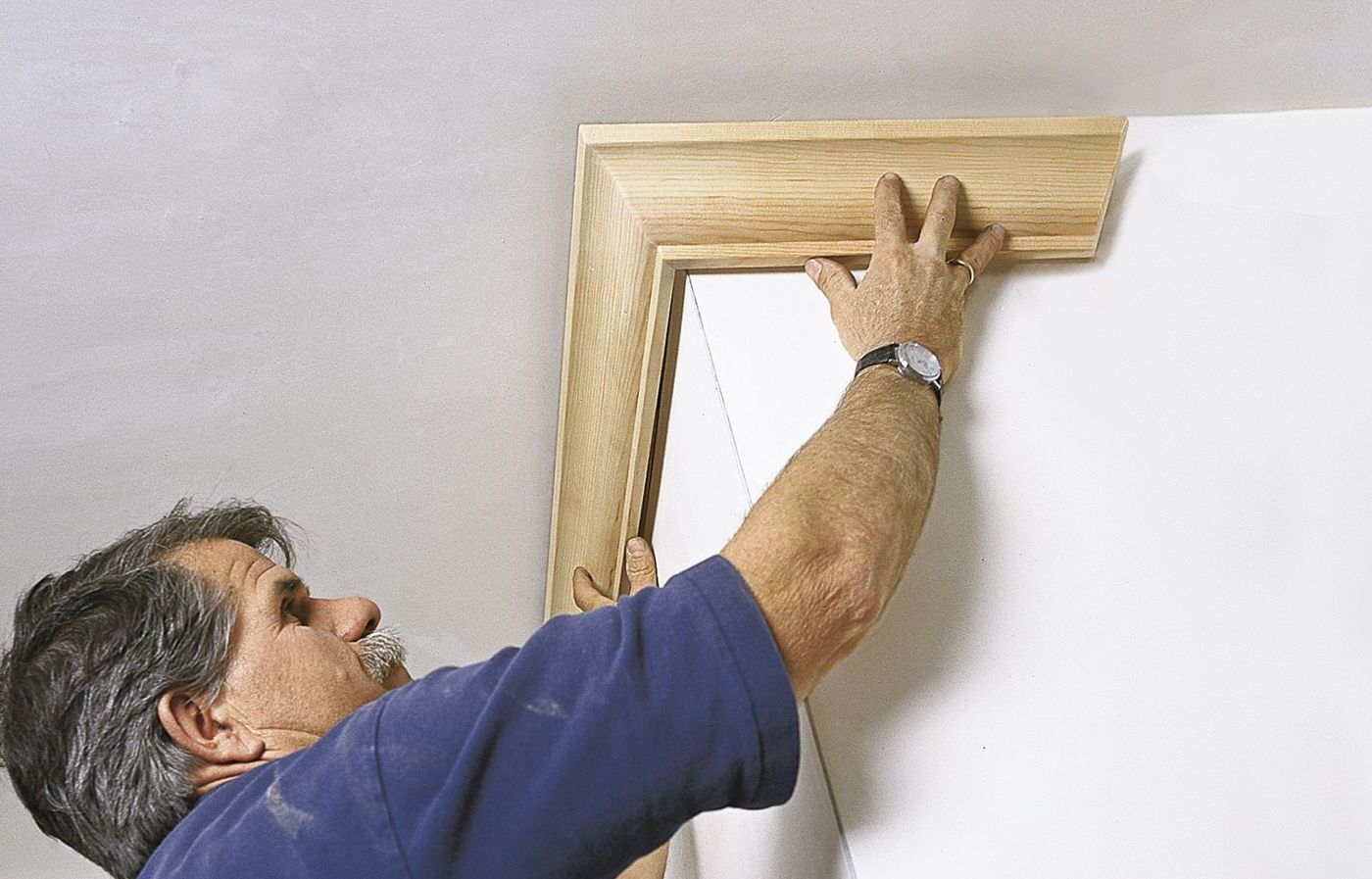
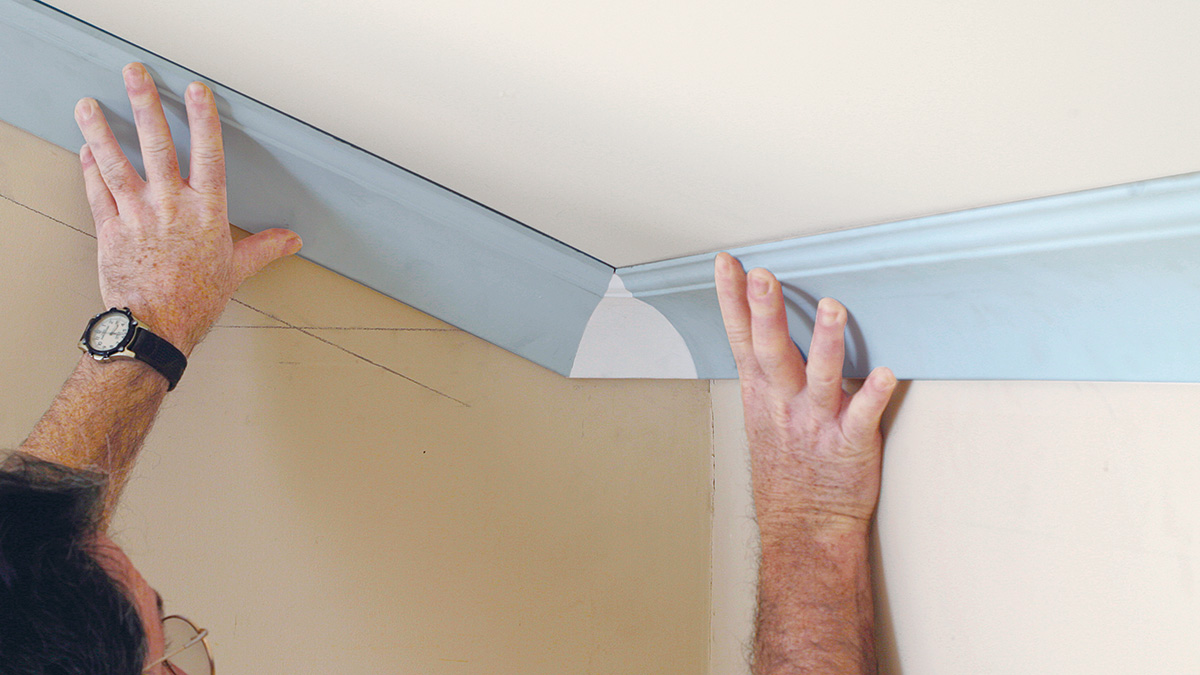
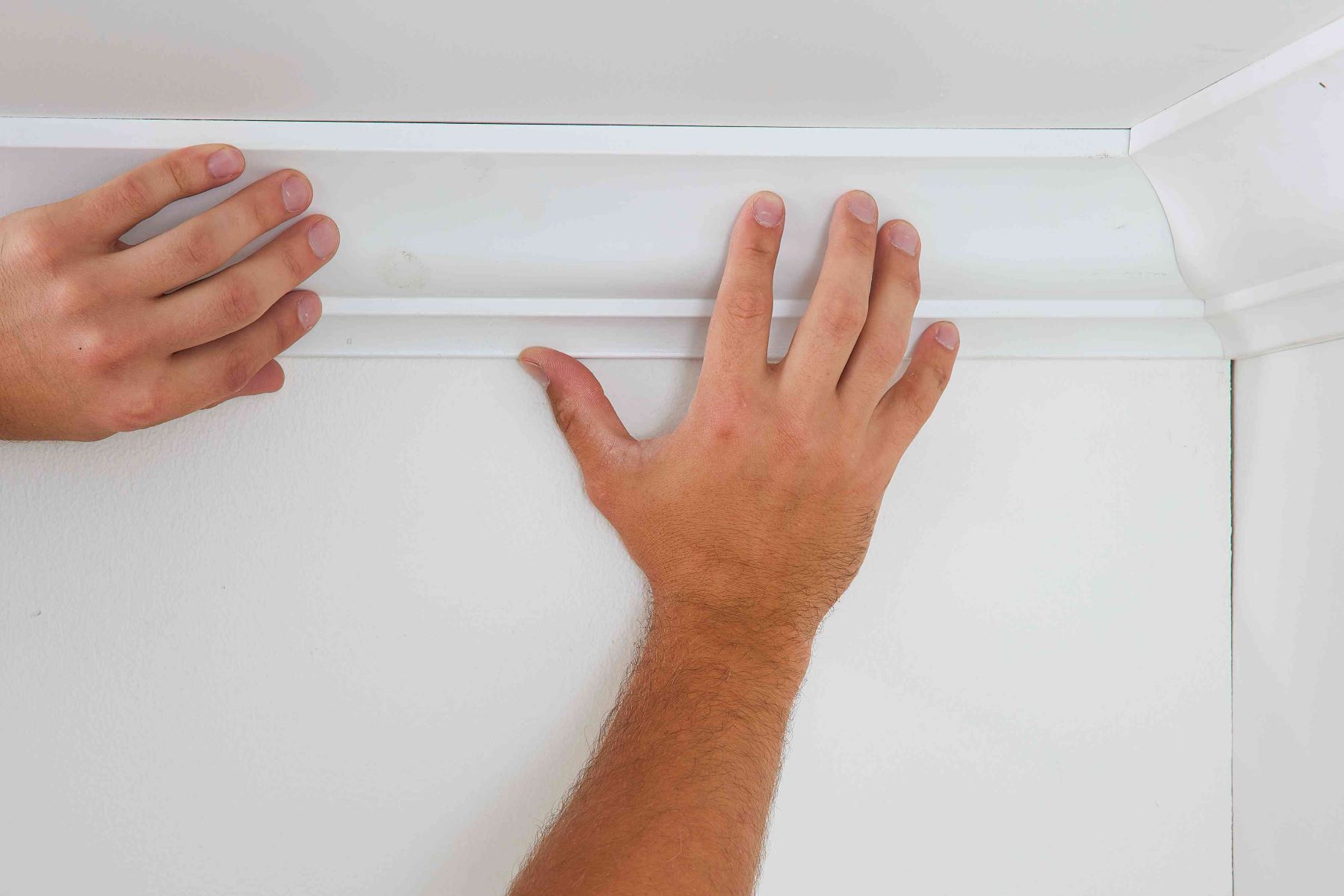

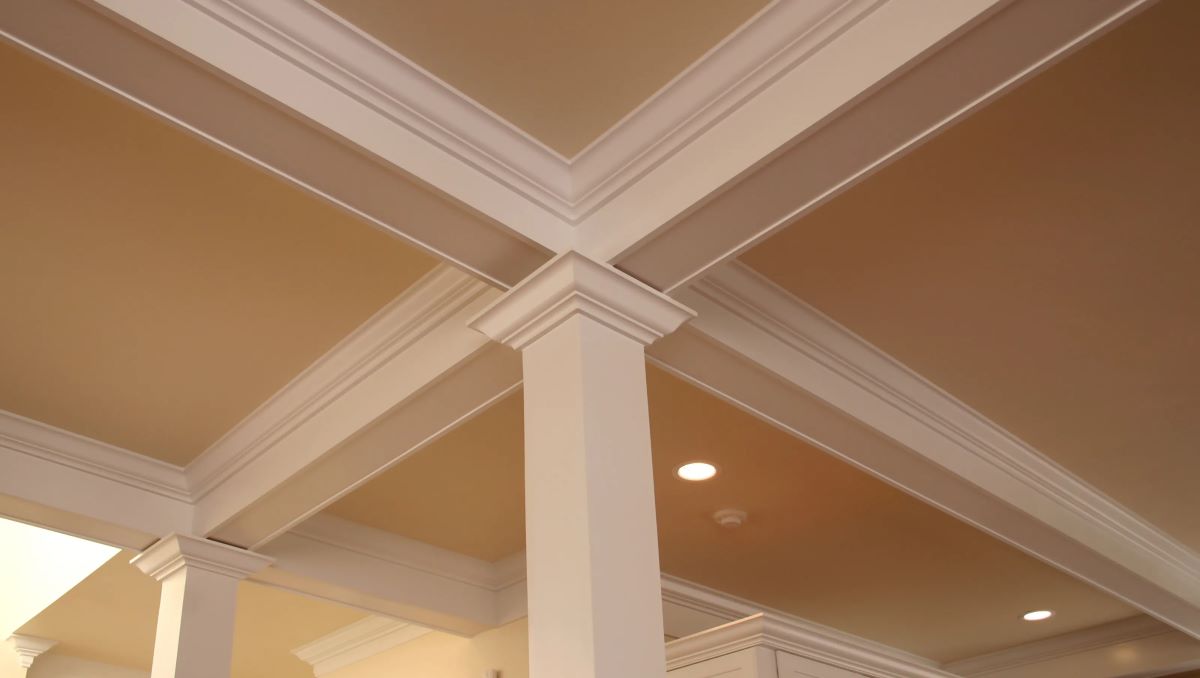
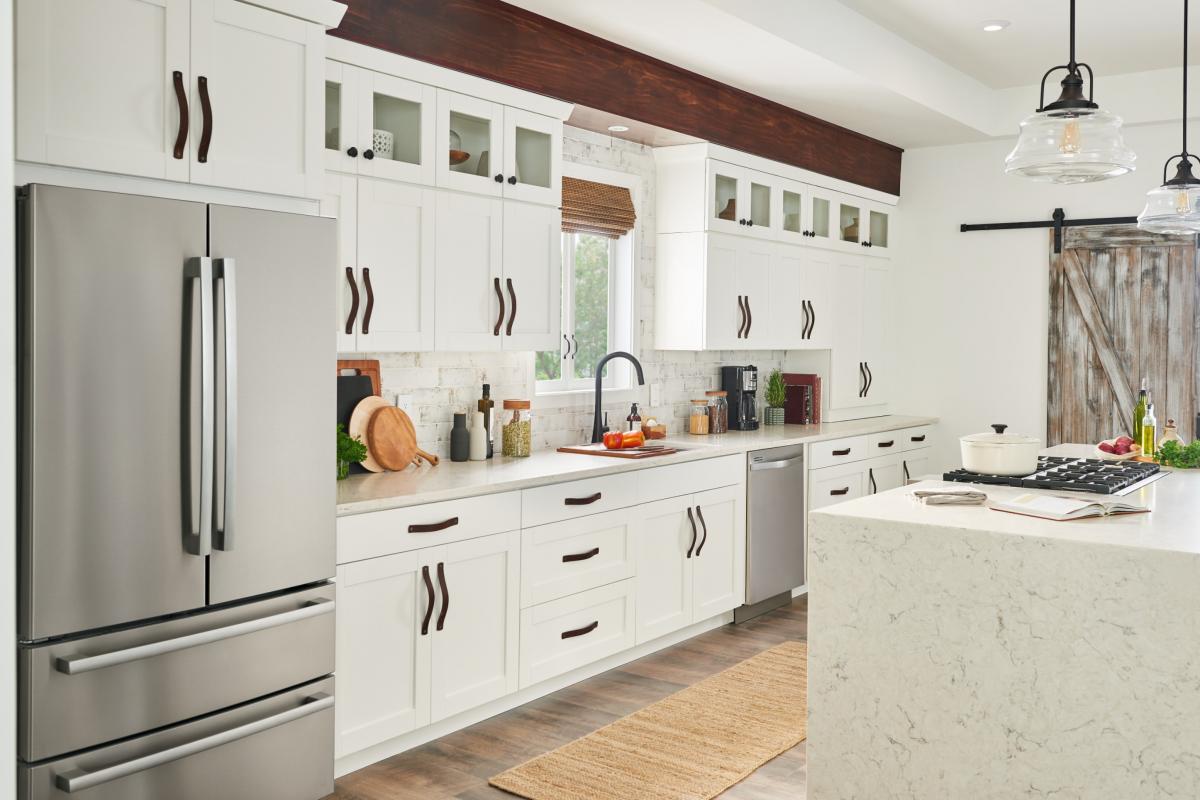

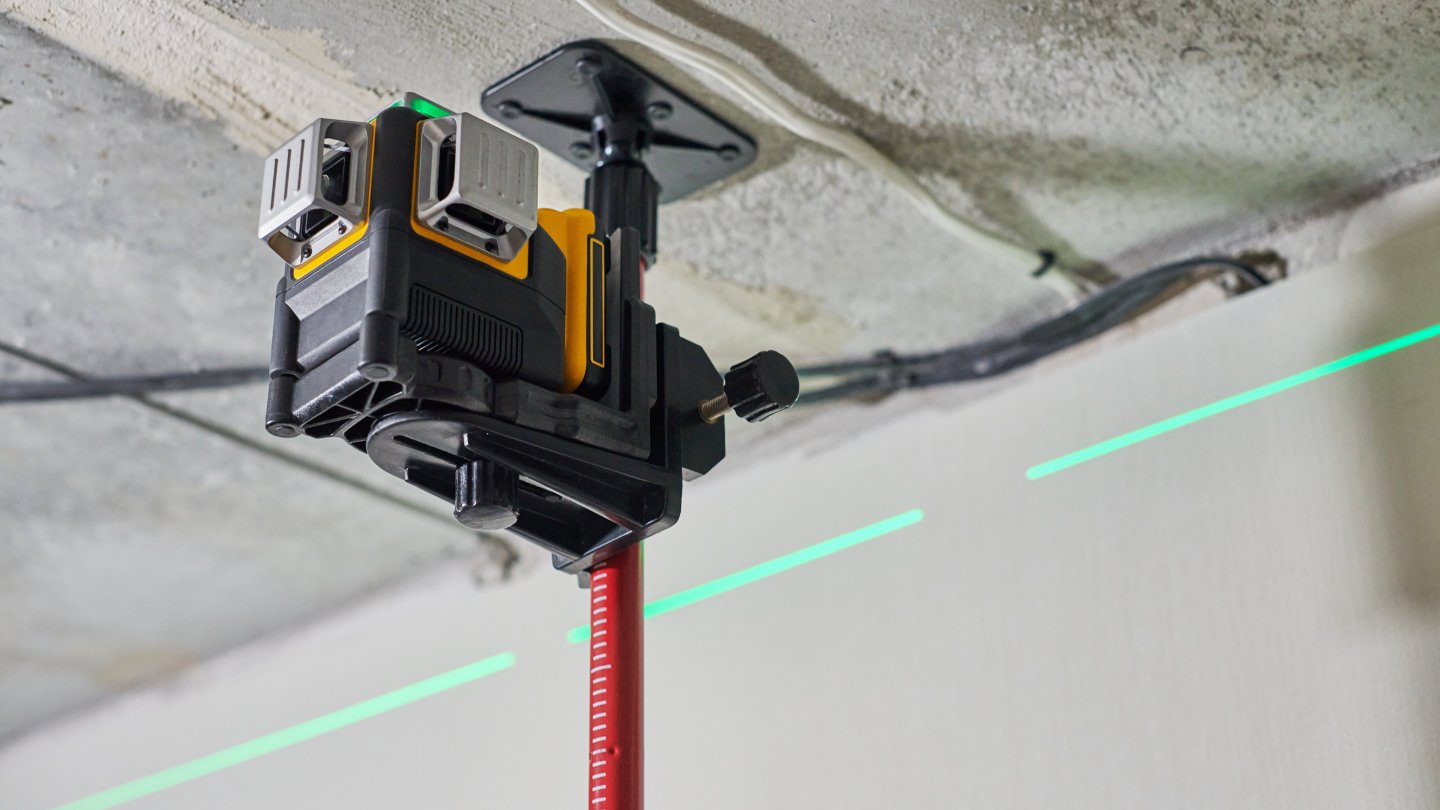
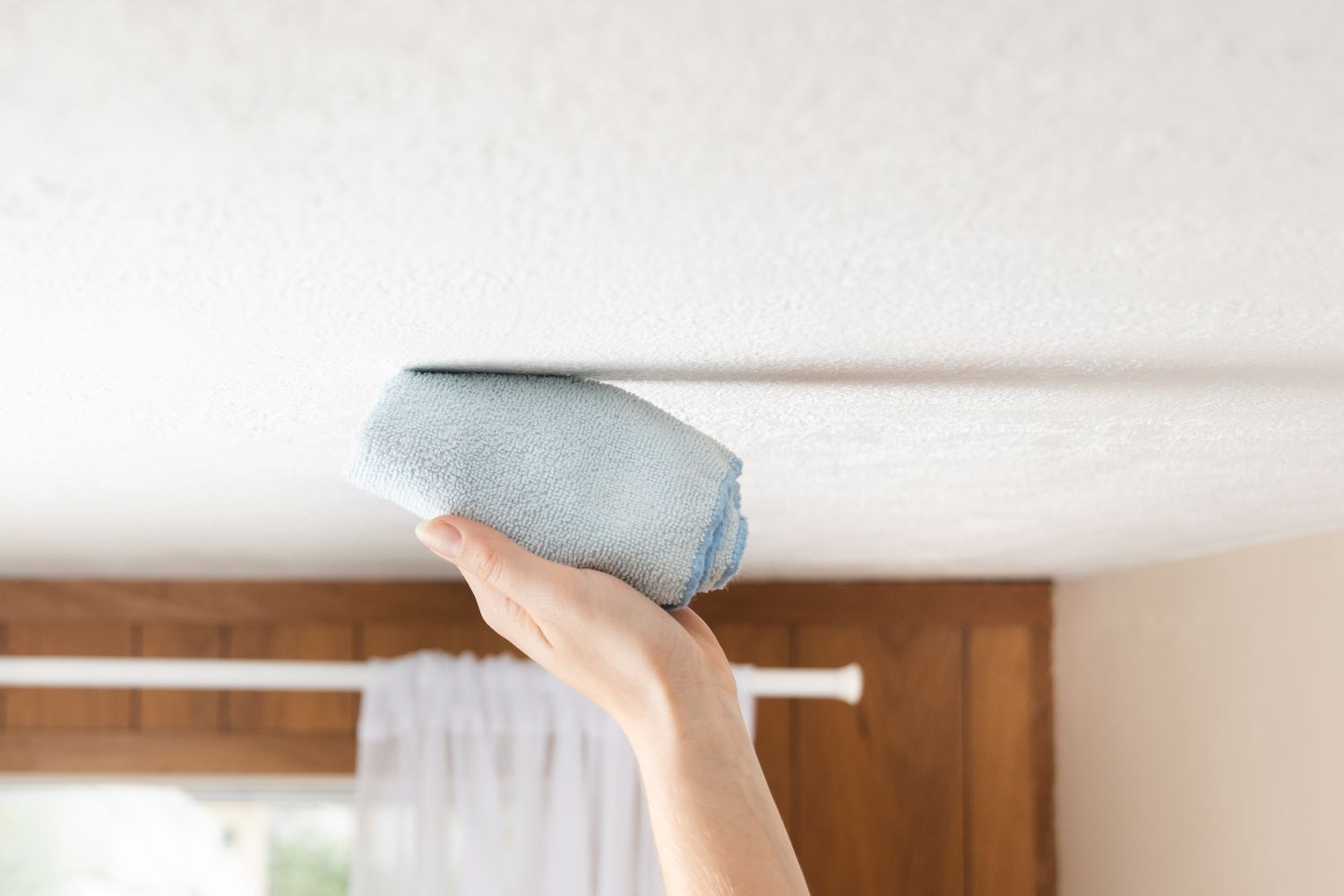
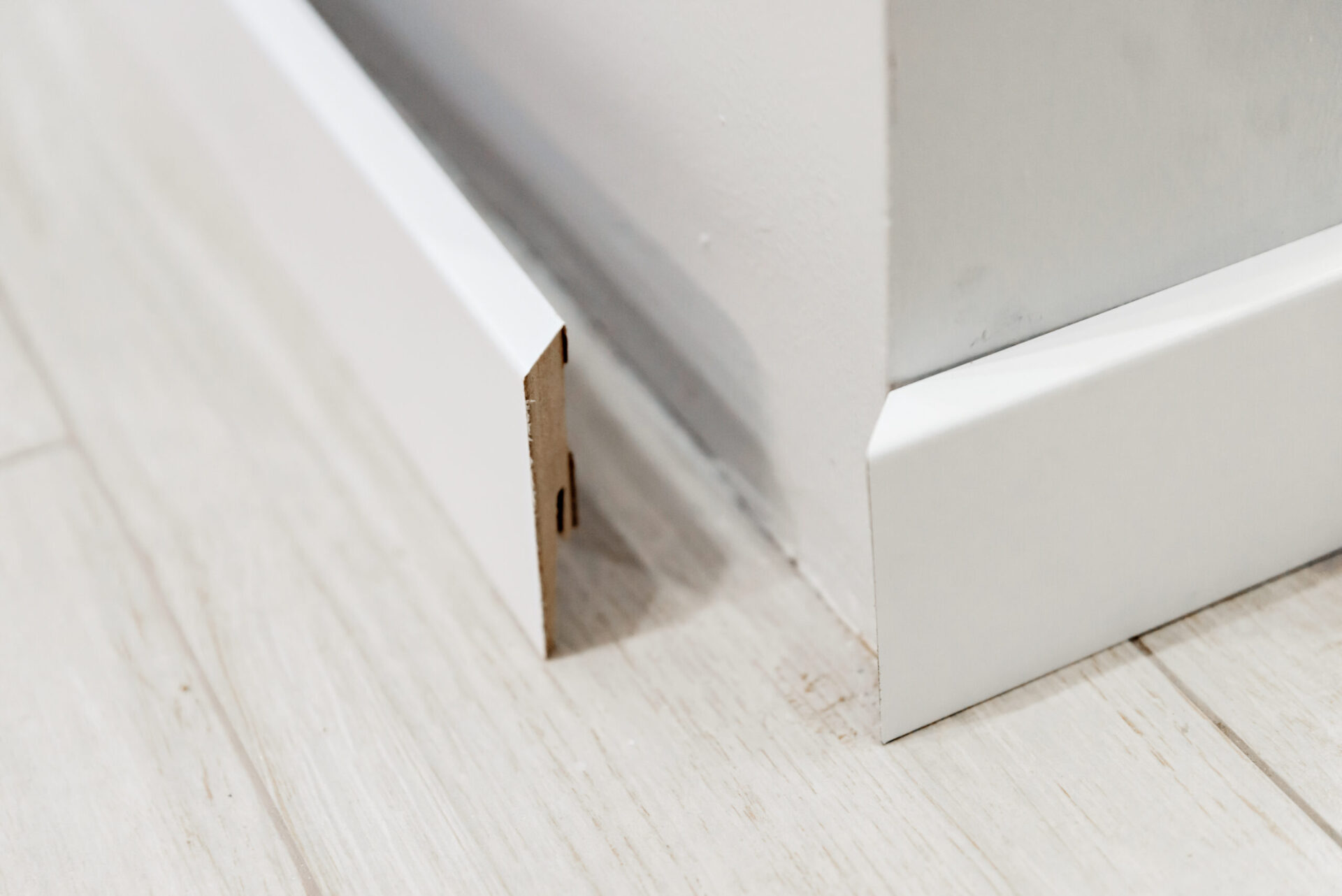

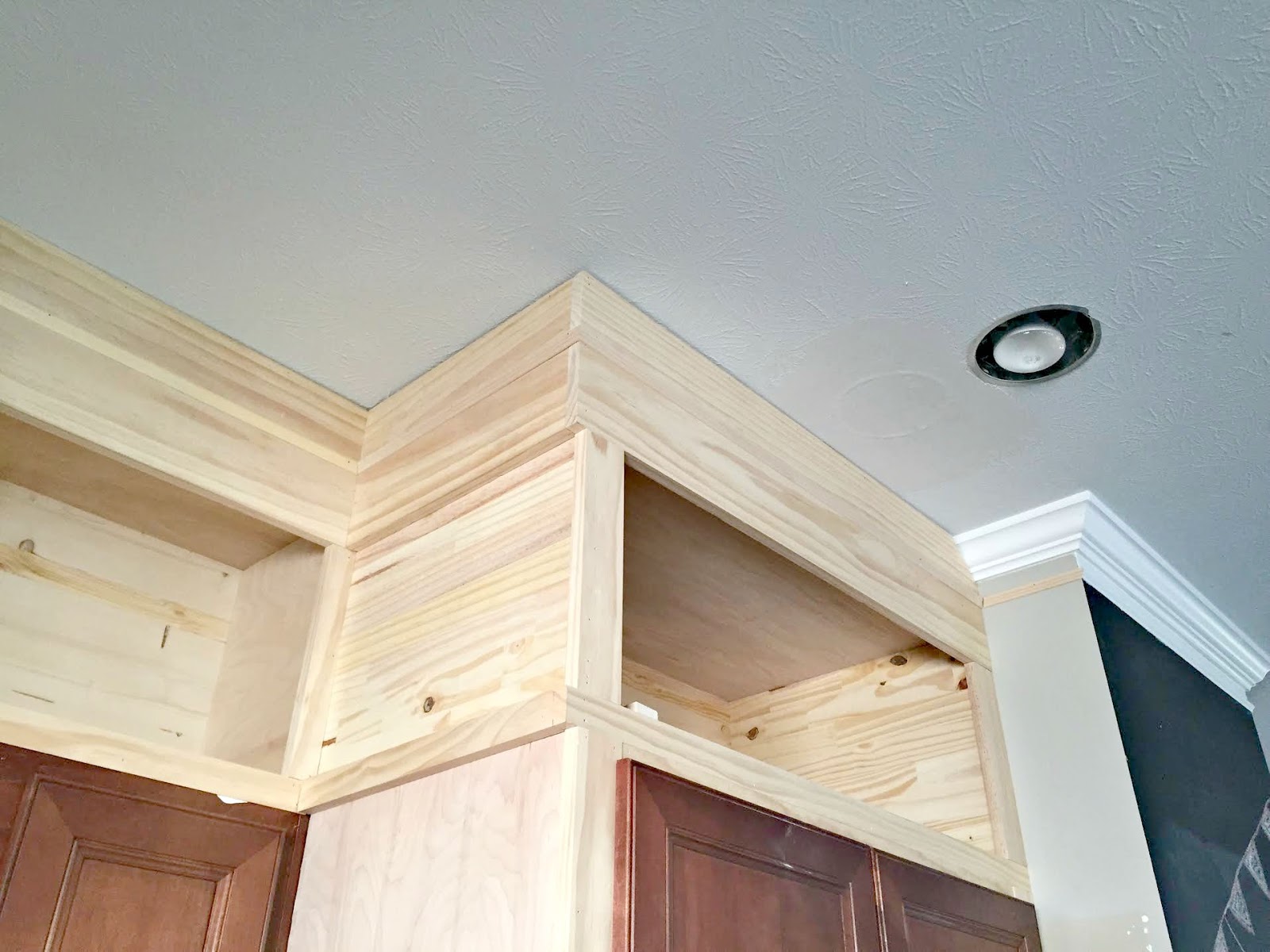
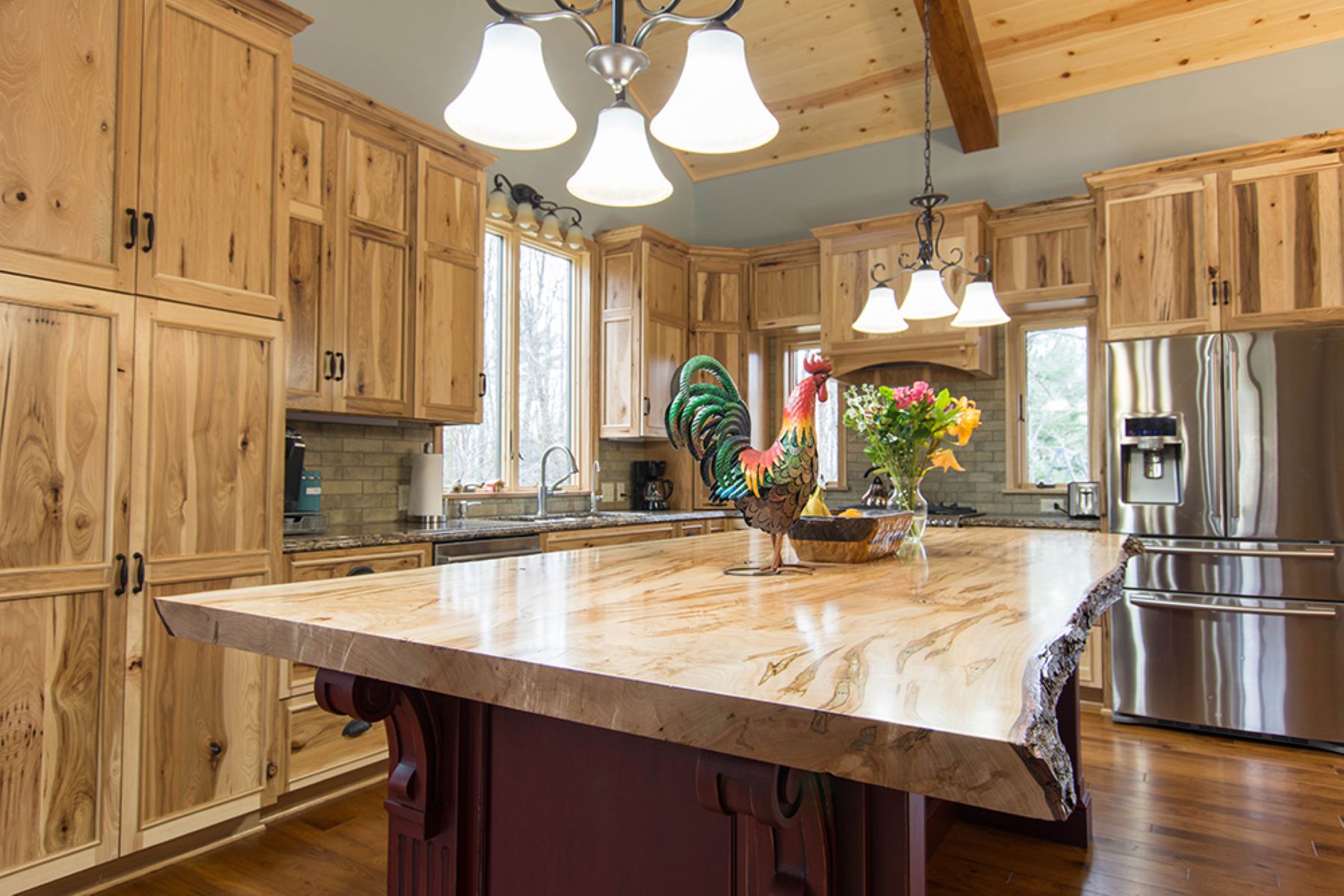

0 thoughts on “How To Install Crown Molding On Cabinets That Go To The Ceiling”